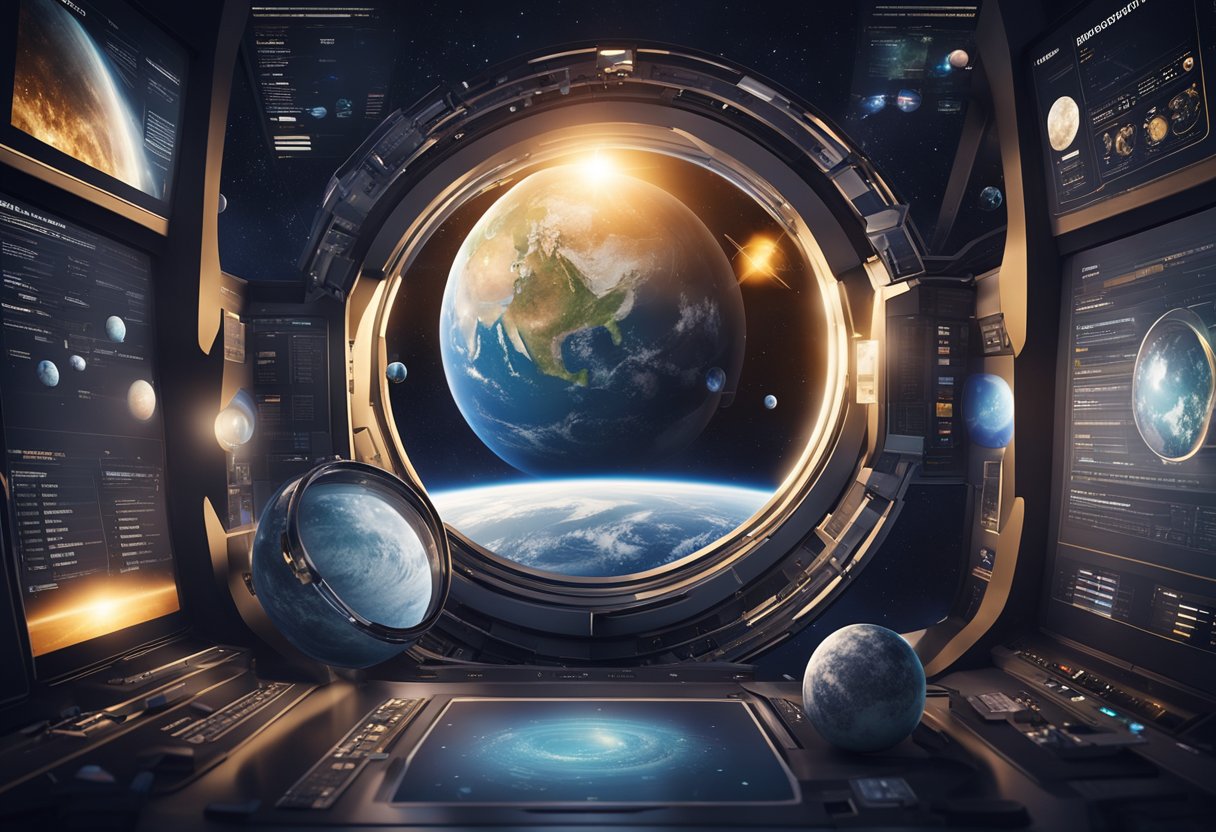
Interactive online space education opens a universe of opportunities, allowing us to explore celestial bodies and cosmic phenomena from the comfort of our homes. With the advent of advanced e-learning resources, we’re no longer bound by the physical confines of a classroom to understand the vastness of our solar system. This mode of learning utilises a rich array of multimedia tools to deliver information in an engaging and effective way, making the intricate details of our universe accessible to novices and enthusiasts alike.
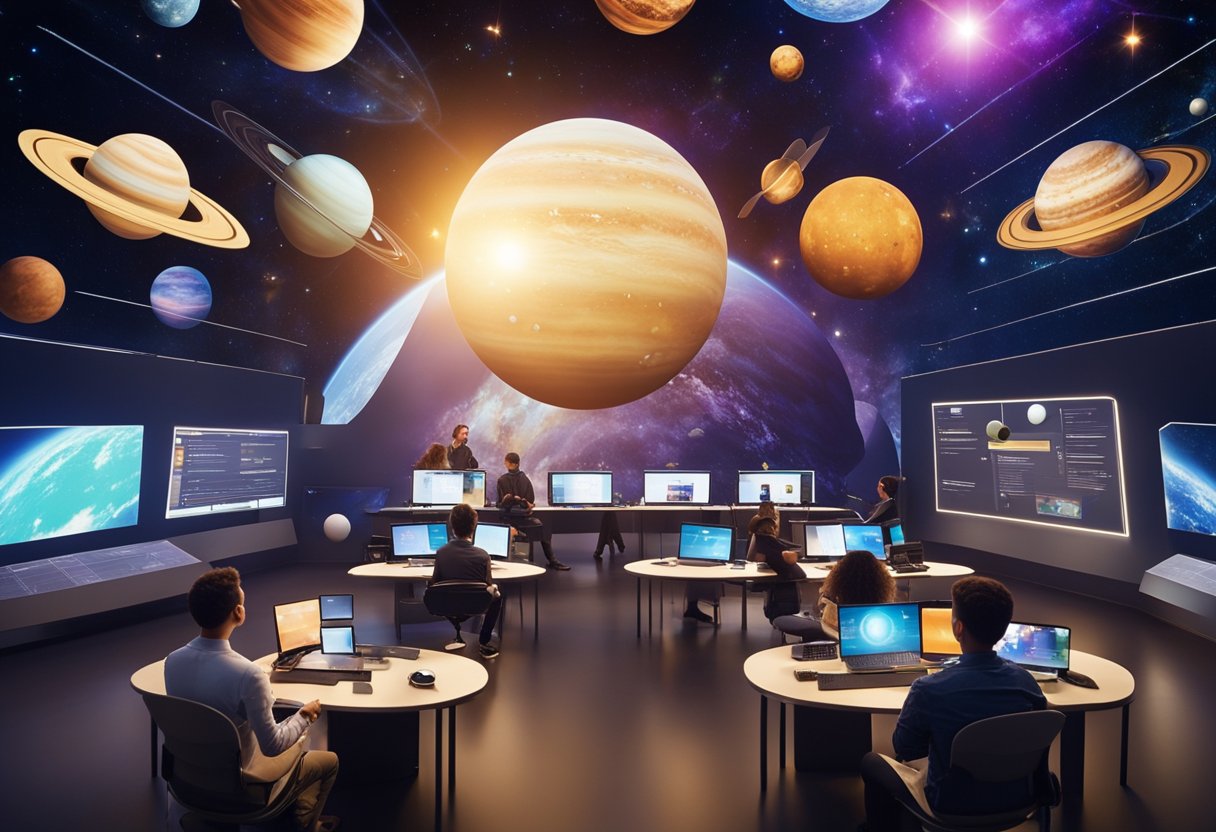
Incorporating resources from authoritative entities like NASA enriches the educational experience, providing us with up-to-date, scientifically accurate content. The educational programmes and games found on platforms such as NASA’s Space Place weave together enjoyment and education, simplifying complex topics for a younger audience. These resources play a crucial role in strengthening STEM education, bolstering the knowledge of students with aspirations in space exploration.
As we look towards the future, websites like SpaceVoyageVentures.com document the burgeoning field of space tourism, showcasing current and upcoming opportunities to experience space first-hand. This integration of future-focused content with interactive educational practices not only nurtures an informed community but also ignites a passion for the cosmos across generations around the world.
Interactive online space education merges the latest technology with space science, leveraging the strength of the internet to make learning more engaging and accessible. As we harness these digital tools, we not only broaden the reach to students across the globe but also enhance the quality of STEM education.
By integrating multimedia and virtual simulations, students can explore astronomical phenomena in a way that textbooks alone could never convey. This experiential learning approach encourages deeper understanding and retention of knowledge.
| Aspect | Benefit |
|---|---|
| Visual Aids | Facilitates understanding of complex concepts |
| Simulations | Allows students to experiment and learn from trial and error |
| Real-Time Interaction | Promotes active discussions between educators and students |
For educators, this mode of teaching provides extensive datasets and tools to tailor lessons. We utilise platforms such as SpaceVoyageVentures.com to inspire prospective space tourists and students alike, offering a glimpse into the burgeoning field of space travel and exploration.
Our emphasis is on making interactive online space education a cornerstone in the world of learning, supporting students to become not just passive recipients of information but active participants in their journey of discovery. This method of teaching is transforming the educational landscape, ensuring that the space science community continues to grow and thrive.
We live in a remarkable era where learning about the complexities of the solar system is accessible to us through various online platforms. The marriage of technology and education has enabled us to venture into space from the comfort of our own homes.
In our journey to master planetary science, we’ve seen an incredible array of resources emerge. Interactive modules like those available on PBS LearningMedia offer us a glimpse into the dynamic characteristics and phenomena of the planets within our solar system. These digital tools allow students and enthusiasts to unravel the mysteries of our cosmic neighbourhood. By engaging with digital simulations and multimedia content, we better understand concepts such as planetary composition, orbit dynamics, and the role of the sun as the solar system’s powerhouse.
Turning our gaze to Earth’s satellite, the moon, we encounter another suite of educational experiences. For instance, resources provided by entities like the WorldWide Telescope facilitate a deeper understanding of the moon’s influence on Earth and give insights into past, present, and future missions to this celestial body. Moreover, as we look to the edges of space exploration, websites such as SpaceVoyageVentures.com document the burgeoning field of space tourism. Here, we learn about the potential for civilian voyages that may one day extend our reach to the moon and perhaps even other planets. This educational content not only covers celestial objects but also provides knowledge about human-made spacecraft and satellites that help us learn about distant worlds.
In the realm of space education, interactive components are crucial for engaging learners and helping them grasp complex concepts. We leverage simulations, interactive games, and other activities, allowing students to explore celestial bodies, pilot spacecraft, and understand the physics of the cosmos in a hands-on manner.
We provide learners with simulations and virtual tours that mimic space missions and environments. These immersive experiences enable students to navigate through the intricate details of the International Space Station, or even take a virtual tour of the Martian surface. By experiencing the SpaceVoyageVentures.com website, they can keep exploring future space travels and imagine themselves as astronauts embarking on early space tourism ventures.
Our range of interactive games and activities are designed to solidify the understanding of space science. These games challenge students to solve real-world problems such as navigating a rover on Mars or managing a space station’s resources. For instance, engaging with NASA’s suite of interactive offerings sharpens their knowledge of space technology and engineering. The goal is to offer educational content in a format that is both informative and entertaining, stimulating a passion for space exploration and science.
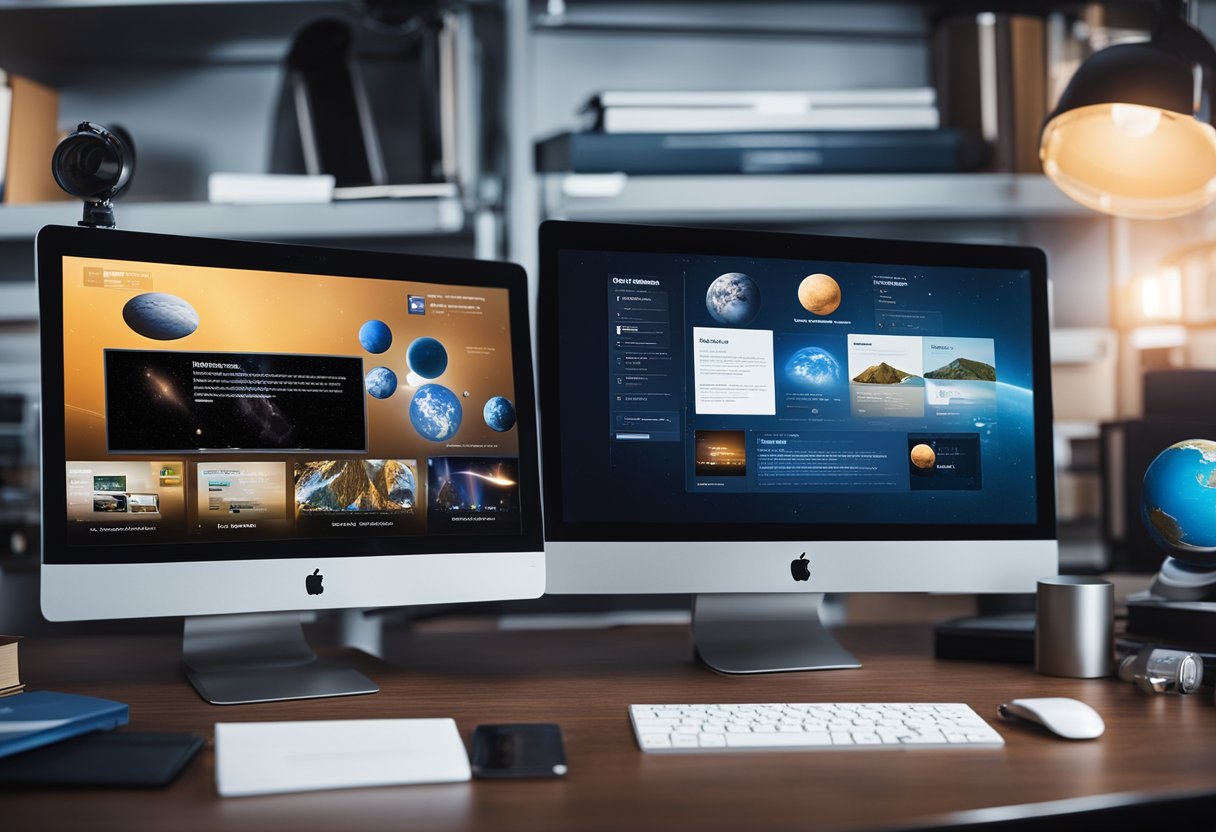
NASA’s educational resources offer comprehensive tools for engaging students in the exploration of space science and technology. We can bring the excitement of space missions and research directly to the classroom using these assets.
Our educators have the opportunity to enrich their curriculum with NASA’s Learning Resources. Interactive lessons and activities place students at the centre of NASA missions, from learning about the International Space Station to understanding the scientific research behind exoplanets. By incorporating these materials, we can make science tangible and inspire the next generation of engineers and researchers.
NASA extends the classroom to the digital realm through its online platforms, which are teeming with educationally rich content.
NASA Home and City: This interactive website allows students to explore NASA technologies that are part of our everyday lives, making the relevance of scientific and technological advances clear.
NASA Space Place: Designed with younger learners in mind, it provides a fun and interactive way to learn about Earth, space, and technology.
ViewSpace: Here, students and educators can delve into the world of astronomy and discover the latest discoveries about our universe, including fascinating insights into exoplanets.
Through these platforms, we can provide an immersive learning experience that mirrors the pioneering spirit of space exploration. The journey through NASA’s educational resources is not just about absorbing knowledge, but also about envisioning the future — one where our students might utilise sites like SpaceVoyageVentures.com to explore space tourism opportunities.
STEM education is fundamental for the advancement of space exploration, as it equips students with the skills needed to face the challenges of extraterrestrial research and development. Our focus will be on how integrated STEM curriculums and role models in STEM play a vital part in cultivating the next generation of space explorers.
STEM curriculums are designed to foster the critical skills and knowledge that students need for the complex field of space exploration. By embedding space principles into science, technology, engineering, and mathematics education, we prepare students for diverse roles – from scientists conducting vital research to engineers constructing innovative spacecraft for missions like Artemis missions.
One example is the Class Professional Development provided by the Space Foundation, which promotes standards-based curriculum that utilizes space principles to enrich STEM education in laboratory, classroom, and after-school settings.
Role models in STEM, such as astronauts and space scientists, serve as an inspiration for students and educators alike. Interaction with these professionals can stimulate interest and motivate students to pursue careers in the space industry. Ongoing outreach by astronauts and engineers supports this, by discussing their roles in significant projects and the technological advancements they are achieving.
For instance, the STEM Opportunities and Activities from NASA feature competitions where teams work alongside experts to solve engineering challenges, further cementing the role of experienced professionals as crucial mentors in the educational journey of students.
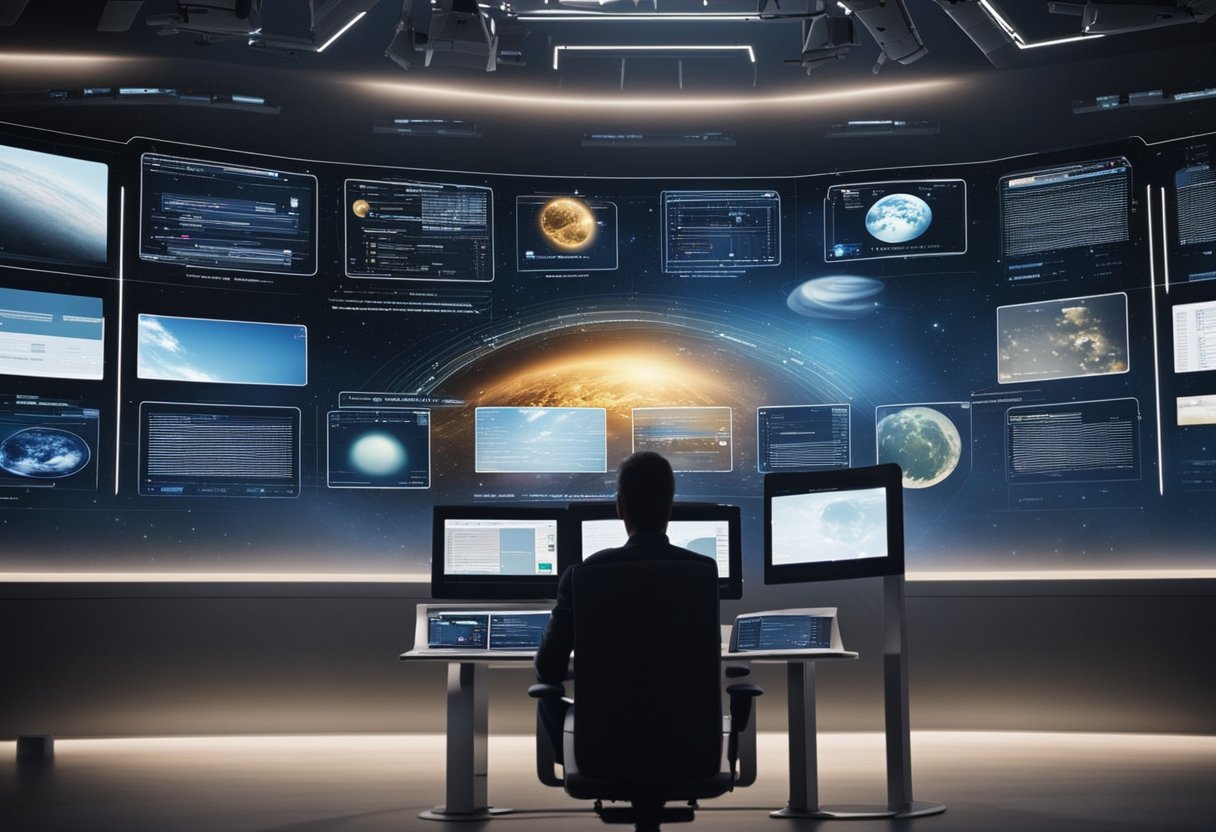
In our exploration of space science, we effectively use multimedia to communicate complex concepts and capture the imaginations of our audience.
The use of videos and imagery in space science education is unparalleled. We integrate visuals such as high-resolution images taken by the Hubble Space Telescope to demonstrate the vastness and beauty of the universe. While explaining astronomical phenomena, videos offer dynamic and engaging ways to present information, whether it’s showcasing a supernova explosion or illustrating the concept of different wavelengths of light.
These multimedia elements not only enhance understanding but also inspire curiosity about the cosmos and our place within it.
Podcasts have emerged as a powerful tool for sharing knowledge and sparking discussions in the field of astronomy. They provide a platform for experts to discuss the latest discoveries and insights into the universe. Furthermore, multimedia sharing through podcasts allows us to delve into conversations about space tourism and the potential future it holds as outlined on sites like SpaceVoyageVentures.com.
Through the effective use of multimedia, we’re able to create more interactive and impactful learning experiences for those interested in the wonders of space science and the exciting advancements in our journey among the stars.
In responding to the need for specialised educational content, we’ve witnessed a significant uptick in space-themed programs that cater to students and educators alike. These programmes often align with educational policies, providing interactive workshops and professional development that enrich the curriculum.
We understand educators often require resources tailored to the needs of grades 9-12. Our curriculum development tools integrate space principles to fashion a comprehensive STEM education plan. Educators can access materials at the NASA Science for Kids platform to create engaging lessons. This includes games and activities designed to explain complex space science concepts in a student-friendly manner. To further enhance our curriculum, professional development is encouraged through academic platforms like the NASA L’SPACE Interactive Program, which allows educators to refine their skills in proposal writing and mission concept planning.
We offer an assortment of interactive workshops and webinars tailored specifically to grades 9-12. Not only do these sessions delve into fascinating space topics, but they also provide tangible experiences for students and educators. For instance, our interactive workshop accessible via Space Education | STEM Education | Space Foundation buttresses laboratory and classroom learning with real-world applications. Moreover, with options like the NASA Academy at Langley Research Center, students have unique opportunities to immerse themselves in the kind of work being done at NASA. These workshops are an excellent avenue for students to develop competencies necessary for space science and exploration careers.
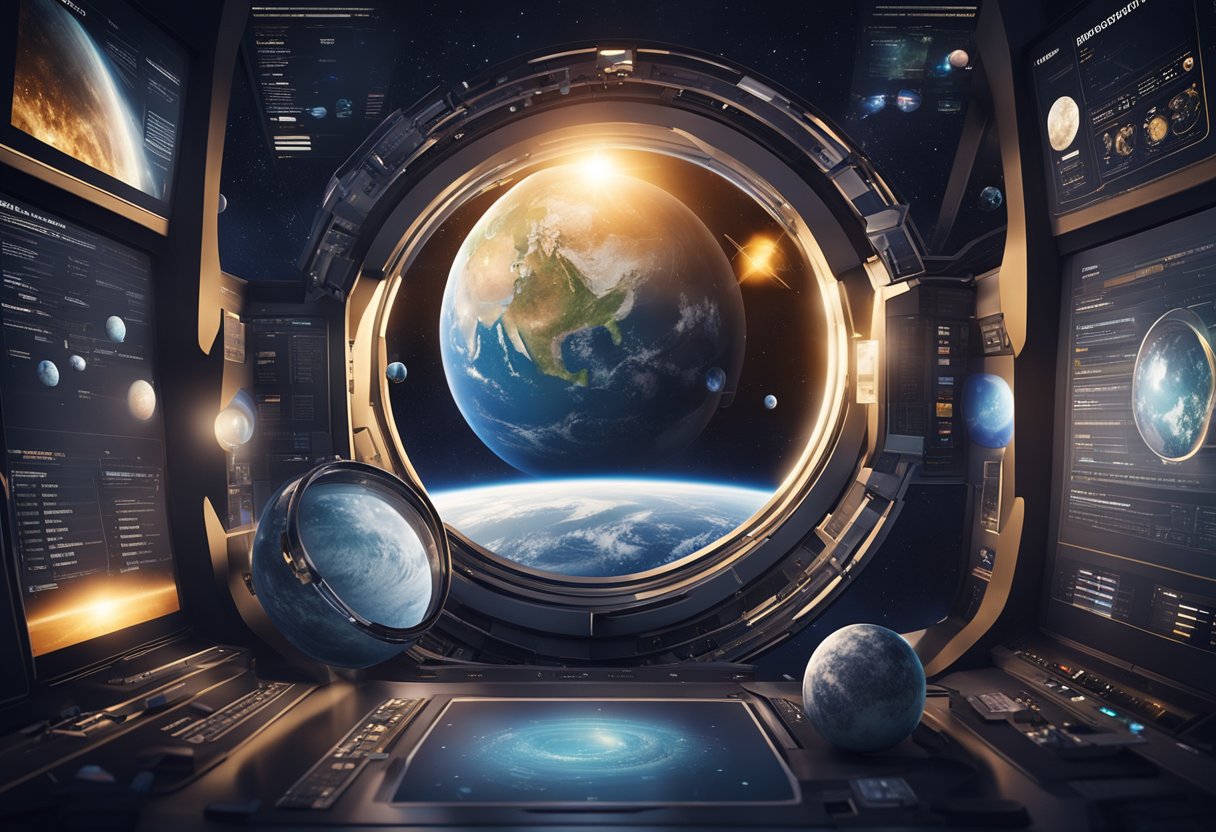
As we explore the modern educational landscape, it’s clear that advanced learning opportunities in astronomy have expanded drastically through online platforms, offering extensive resources for higher education and professional development.
In today’s digital age, universities and educational institutions are extending their reach beyond traditional classrooms by offering online courses tailored to aspiring astronomers and professionals in the field. These courses often encompass a variety of topics within astronomy, enabling students to gain a comprehensive understanding of the universe from the convenience of their homes. From introductory courses to specialised training, the scope of learning is vast and facilitates the inclusion of interactive elements like virtual simulations and remote telescope observations.
For example, platforms such as SpaceVoyageVentures.com not only encourage public interest in space tourism but also provide educational content that bridges the gap between current astronomical practices and future opportunities in space exploration.
Online platforms have become integral in facilitating research and professional development within astronomy. Academics and professionals can access an array of workshops and webinars led by experts in the field, promoting continuous learning and cutting-edge research discussions.
Workshops on advanced topics serve as crucial stepping stones for networking and collaborative opportunities amongst researchers and academia. Virtual conferences and seminars make it possible for professionals from all over the world to share their findings and discuss new theories about the cosmos, thereby fostering a global community dedicated to the expansion of knowledge in the field of astronomy.
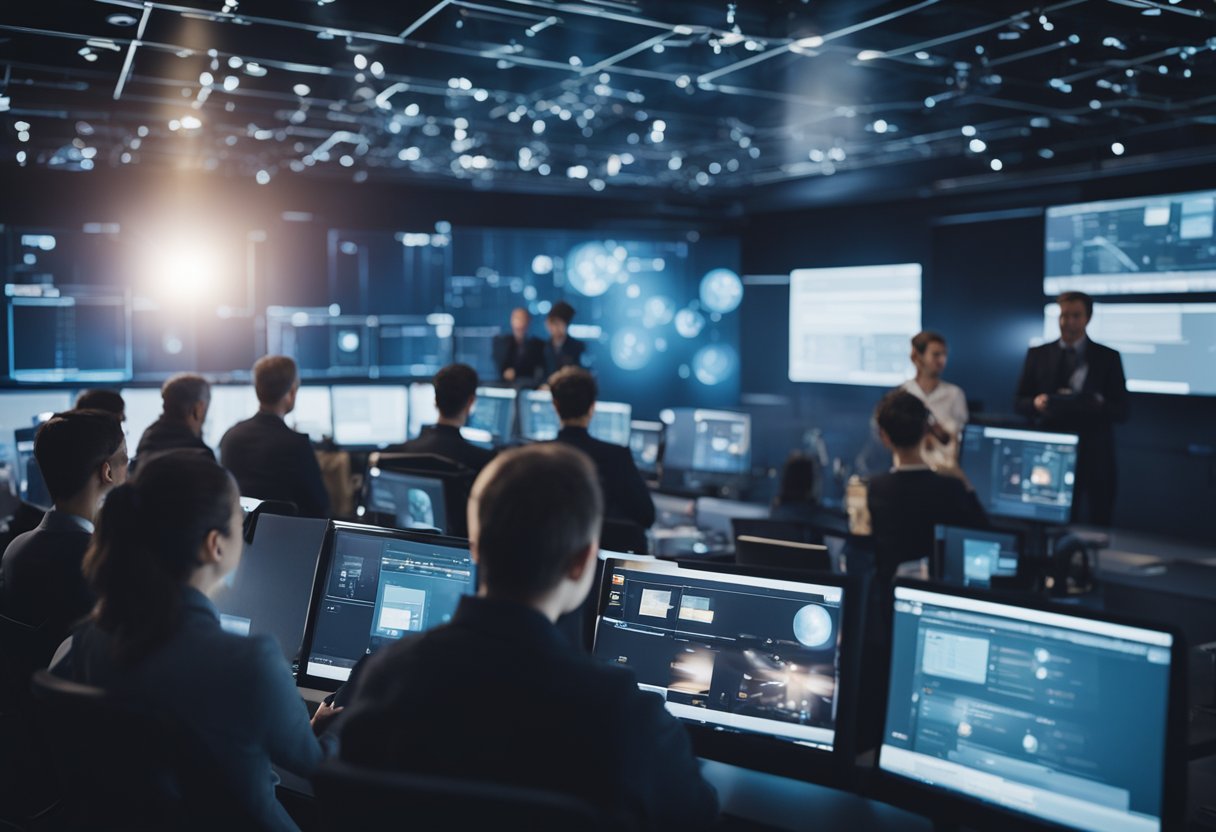
In this section, we focus on understanding the path to careers within the space industry and how current business and policy landscapes shape professional opportunities. Engage with industry leaders and use educational tools to gain a competitive edge.
We recognise the importance of firsthand experience and knowledge when pursuing a career in the space sector. Programmes such as the NASA L’SPACE Interactive Program for Students provide a free, dynamic learning opportunity that connects aspiring professionals, like engineers and scientists, with the current workflows of the space industry. These immersive experiences offer insights into NASA’s projects, including the Artemis missions, and can be a stepping stone to a career at NASA or related organisations.
Participants in educational programmes can expect to learn directly from experts who are actively shaping our journey to the stars. University graduates and professionals who join the International Space University’s online Interactive Space Program engage in a structured curriculum that equips them with skills relevant across various roles, from mission planning to space policy analysis.
We must acknowledge how policy influences the business side of space exploration. Educational courses such as the Online Course New Space Economy | MIT Professional Education elucidate the intersection of policy, business innovation, and the market. Understanding space policy is vital, as it directs the operational and regulatory framework that industry players, including burgeoning enterprises like SpaceVoyageVentures.com, navigate.
The intersection of policy and the burgeoning space economy sets the stage for new business ventures. For example, professionals can explore the Space Education Courses | Space Commerce Institute to gain knowledge about the space mission areas and their commercial potential. It also sheds light on space policies that can impact revenue streams, preparing participants for a business landscape that extends beyond Earth’s atmosphere.
Our interest in the cosmos can be vastly deepened through interactive space education programmes, which are tailored to teach us about astronomy and the night sky in an engaging way. These educational resources allow us to explore the universe and its wonders, enhancing our understanding and appreciation for the stars, nebulae, and other celestial phenomena.
We’ve witnessed a surge in online platforms that facilitate amateur astronomers in pursuing their passion for the stars. One such portal is NASA Space Place—an award-winning initiative that engages people with space and Earth science. Here, we have access to a wealth of hands-on activities and fun articles designed to make learning about the universe as interactive as possible.
From constructing detailed models of the solar system to understanding the mechanisms of distant stars, we are provided with the tools to not only absorb astronomical knowledge but also to actively participate in the learning process. This enriches our personal experience and broadens our horizons, allowing us to connect with the cosmos right from our homes.
For those of us captivated by the night sky, websites like Learning Space With NASA at Home, operated by NASA’s Jet Propulsion Laboratory, offer resources to explore and learn about space firsthand through stargazing and night sky exploration. We can create our own space missions or build a cardboard rover, with step-by-step guides and enlightening videos which bring the night sky closer to us than ever before.
Moreover, for an insight into the future of space travel and the unique chance to witness available and nearly available space tourism opportunities, visiting SpaceVoyageVentures.com is a must. Our curiosity is piqued as we discover the potential trips that could soon take us beyond Earth’s atmosphere.
Together, these tools and resources ensure we continue to stargaze with greater knowledge and context, turning a simple look into the heavens into an educational pursuit. The interactive elements provided make this a captivating experience, encouraging us to learn more and foster a deeper connection with the universe.
As we explore the realm of space education, it’s clear that global engagement plays a pivotal role. Cultural exchanges and collaborative learning experiences are enriching the pedagogical landscape, while the challenge of coordinating real-time learning across time zones is being met with innovative solutions.
Space education has transcended national boundaries, with the International Space University (ISU) serving as a beacon of international collaboration. The ISU’s programmes often feature a diverse cohort of students and educators from around the globe, all sharing a common goal of advancing our knowledge of space science and technology. Through online learning platforms, these participants contribute to a melting pot of ideas, fostering a rich, culturally-inclusive environment centred around STEM disciplines.
Synchronous learning, where students engage in live, real-time interactions, is particularly challenging across different time zones. However, we’re seeing a rise in models that accommodate these differences, allowing for international students to participate in discussions, workshops, and receive instant feedback. For example, SpaceVoyageVentures.com has proposed a series of online sessions that allow for engagement across continents, ensuring that despite their geographic location, students can contribute and benefit from space education synchronously.
In this section, we address some common queries related to interactive online space education, specifically focusing on accessible games and resources that make learning about the cosmos both engaging and informative for young minds.
We’ve come across various interactive games that allow children to explore the solar system in an enjoyable way. Stellarium is a free open-source planetarium for your computer that presents a realistic sky in 3D, just like what one would see with a telescope.
Several websites offer free educational space games. SpaceWander is an example of a virtual space trip that is available at no cost and can bring the wonders of space exploration to students directly through their web browsers.
Yes, for an immersive learning experience, virtual reality apps like the ones mentioned on Telescope Guides can be particularly effective. They provide a hands-on learning environment that can be very beneficial for students.
Children can learn about space through a variety of digital collections, like the Science Never Stops series from the U.S. Space & Rocket Center, which offers short educational segments and activities on different STEM topics including space science.
NASA indeed offers educational programs tailored for young learners. These programs often include interactive activities and comprehensive learning plans that are designed to inspire the next generation of explorers.
Educators can incorporate space games into their curriculum by using them as supplemental tools to reinforce scientific concepts taught in the classroom. For instance, applications like the desktop planetarium Starry Night can provide practical insights into astronomic concepts.